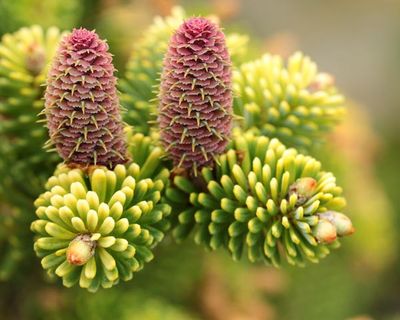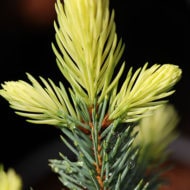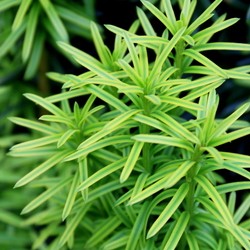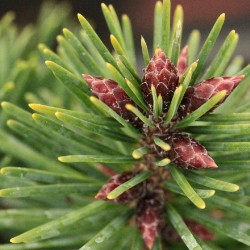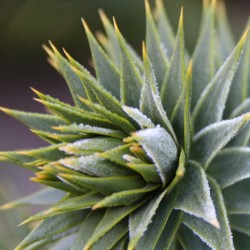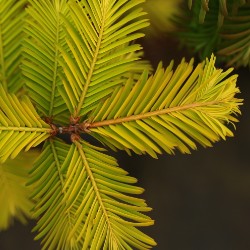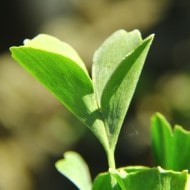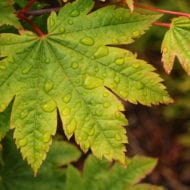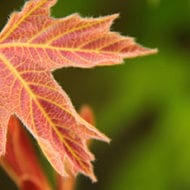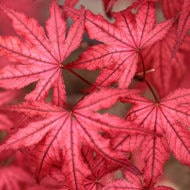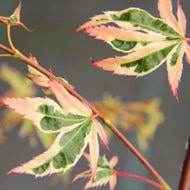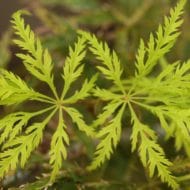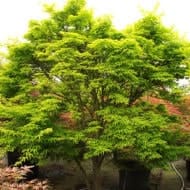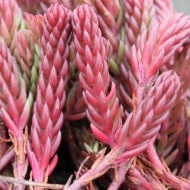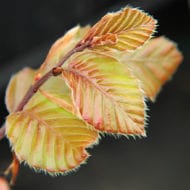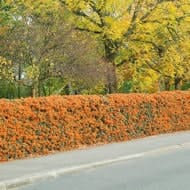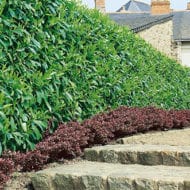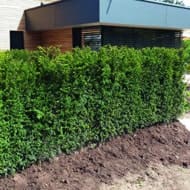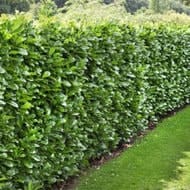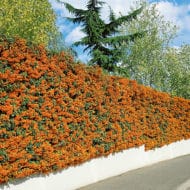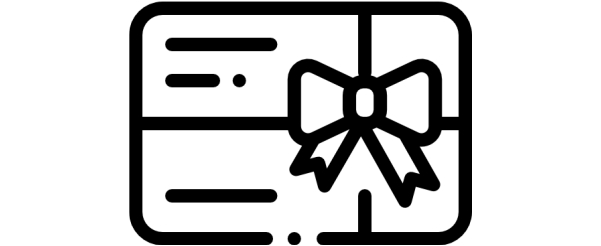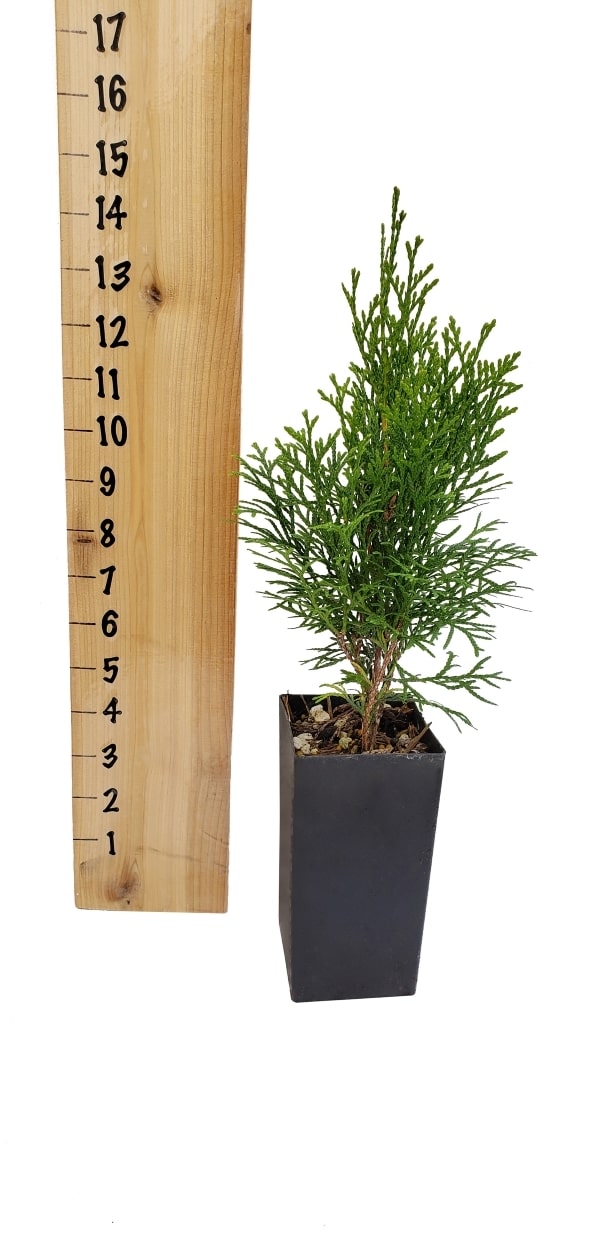Thuja occidentalis ‘Smaragd’ Emerald Green Arborvitae Tree Pot
Emerald Green Arborvitae is a slow-growing evergreen conifer that naturally grows into a tall, narrow columnar shape.
Bulk Discounts Available
Tree Pots
- Base Price: $6.99 ea
- 12-35 Units: $5.99 ea
- 36+ Units: $5.75 ea
Description
Emerald Green Arborvitae is a slow-growing evergreen conifer that naturally grows into a tall, narrow columnar shape. It makes an excellent hedge due to its small footprint, lovely color, and low care needs. It is also very cold-hardy, making it suitable to grow in most parts of the USA.
USDA Hardiness Map

Plant Form
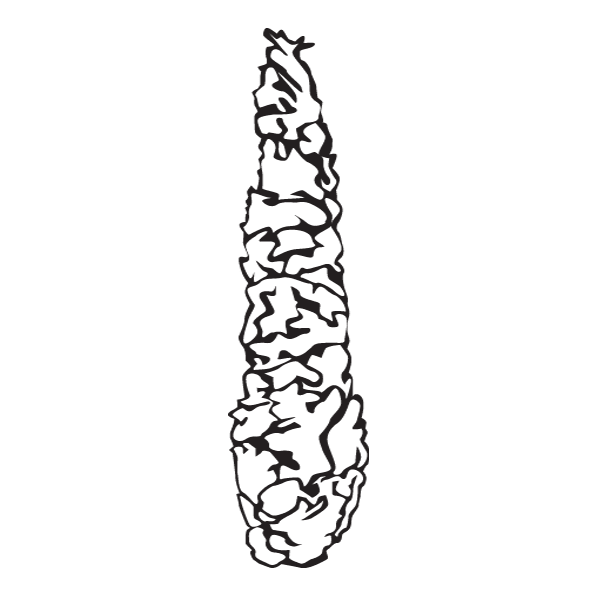

About Emerald Green Arborvitae
Emerald Green Arborvitae is an extremely popular tree for most parts of the United States. If you live between zones 3-8 you have almost undoubtedly seen these growing in many yards. Unfortunately, its common presence has begun to give it an unfairly-bestowed bad name. Many people will say “I want a hedge but NOT Arborvitae.” Part of this feeling may be due to the sheer multitude of these trees, but it could also be from seeing Arborvitae that have been mistreated or planted in bad locations, causing them to lose vigor or look downright ugly.
This is quite sad, as when given proper care and sited well, Emerald Green can form a truly stunning hedge with brilliant green color and unparalleled density. Here are a few reasons why Emerald Green Arborvitae might be the best option for your new hedge:
The semi-dwarf growth habit of Smaragd was one of its most desirable features when it was a seedling discovered in Denmark in 1950. At most, it will grow up to 1 foot per year, but usually averages 6-8” of upright growth per year. Its horizontal growth is even slower, increasing by about 1-2” per year outward. This slow growth rate makes pruning a breeze, and it is usually only required once per year or once every two years. It is best to prune Emerald Green lightly but consistently to prevent needing to prune harshly later on which may result in unsightly browning.
Another feature that made this seedling desirable was its columnar growth habit. They naturally grow into a narrow pillar without any pruning. After 10 years of growth, an Emerald Green Arborvitae should reach about 8’ tall by 1.5’ wide. This makes them perfect for small gardens needing a hedge with a small footprint.
The most impressive feature of the seedling was the bright color of the foliage. “Smaragd”, the original Danish name, means “emerald”, referring to the rich, green hue of the feathery foliage. Unlike a lot of other Arborvitae, it maintains the vibrant green color even in winter, while other types may show some winter bronzing or browning.
Emerald Green is a selection of American Arborvitae (Thuja occidentalis), which is native to the Northern United States and Canada. It is hardy down to USDA Zone 3, making it one of the most cold-hardy hedge options on the market.
Once established (2-3 years after planting), Emerald Green can tolerate drought very well. It can also tolerate some standing water in winter, but does much better in well-draining soil. Full sun is preferred, but it can take some partial shade as well. It has no major disease issues but does need protection from deer.

Top Qualities of Emerald Green Arborvitae
- 1. Bright Green Color
- 2. Narrow Columnar Habit
- 3. Moderately Slow Growth Rate
- 4. Easy to Maintain
- 5. Incredible Density
Additional information
| Latin Name | Thuja occidentalis 'Smaragd' |
|---|---|
| Common Name | Emerald Green Arborvitae |
| Sun Exposure | Sun to partial shade |
| Annual Growth | 1-2' |
| HxW@10 Years | 8'x1.5' |
| Color | Green |
| Form | Columnar |
| Growth Rate | Fast |
| Hardiness Zones | 3-8 |
| Color | |
| Your auto-detected zip code |  |
| hardiness zone based on zip code |  |
| You can also try another zip code |
Related products
-

Clearance Thuja occidentalis ‘Smaragd’ Emerald Green Arborvitae InstantHedge 10 linear feet
$999.99 View Details -

Thuja plicata ‘Virescens’ Virescens Western Red Cedar
$18.99 View Details -

Thuja occidentalis ‘Mossy’ Eastern Arborvitae
$32.99 View Details -

Juniperus scopulorum ‘Skyrocket’ Rocky Mountain Juniper Tree Pot
$6.99 View Details


